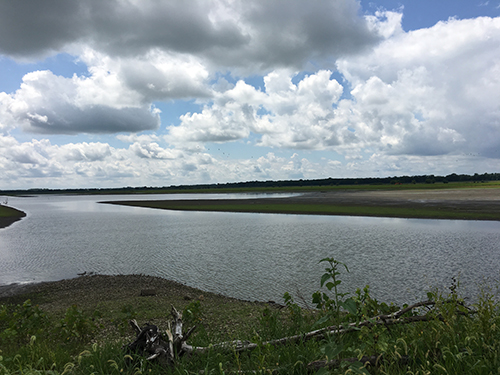
MIKE MILLER
Areas that have been dry the longest are now covered with numerous species of grasses, sedges and rushes. They reach for the sky and quickly produce seed. They take advantage of this fleeting habitat and hope they can finish their life cycles before the river rises and the waters reclaim the newly exposed land.
The ephemeral nature of mudflat also brings a flush of new habitat for other creatures. Exposed soil now has plenty of oxygen and spurs the growth of nematodes and insects. They, in turn, attract migrating shorebirds. Thousands of birds walk the mudflats on long legs, heads down, with their long beaks probing the soil for food. These birds time their fall migration to take advantage of the low water conditions along our major rivers.
As summer progresses and fall approaches, these backwater areas will become thick and tall with moist-soil plants, all producing seed. Summer drought turns to autumn rain and the next stage in the annual cycle of the river begins. Water returns to the backwater lakes and floods the green fields. The shorebirds have long gone to the Southern Hemisphere, but on their heels comes another traveler. Waterfowl, countless in number, land upon the water. Below their flapping feet are the submerged plants of summer. The seed heads ripe with food for the ducks. The ducks now are the ones with their heads down, below the surface of the water, reaping the harvest of the summer’s bounty.
The Illinois River is a river of riches. The diversity is tied to the fact that our river still has a pulse… a flood pulse. The seasonal nature of flood, then retreat, then flood again is crucial to uncountable species. Some years are better than others. The flood pulse is sometimes out of whack. Last year, we had unseasonable flooding in August. This upset the timing of plants, and many did not grow in the backwaters. Shorebirds didn’t linger on the mudflats that were submerged, moist-soil plants did not grow and produce seed, and waterfowl numbers were low in the fall. But this year, it is shaping up to be an incredibly productive year.

Looking south over the South Globe unit of Emiquon Refuge accessible from Dickson Mounds Road. (PHOTO BY MIKE MILLER)

1 comment for “Nature Rambles | Low water level brings new life”